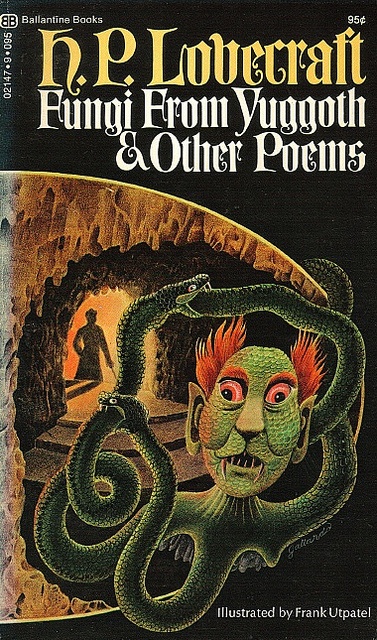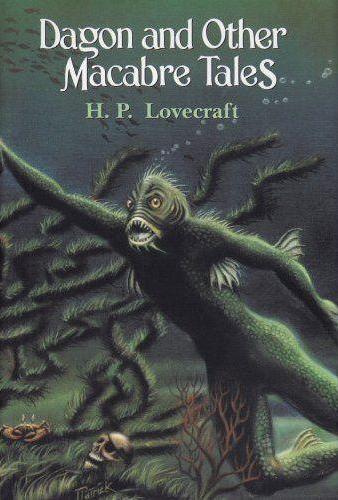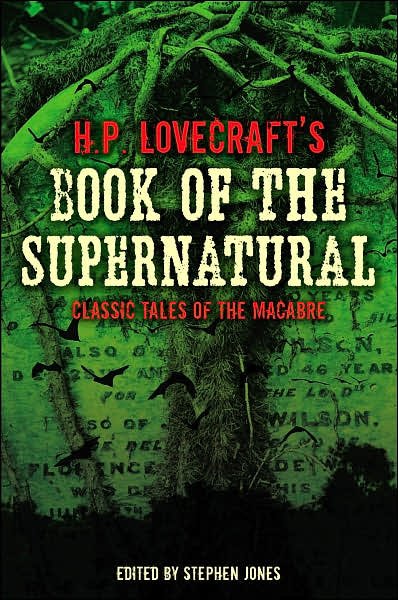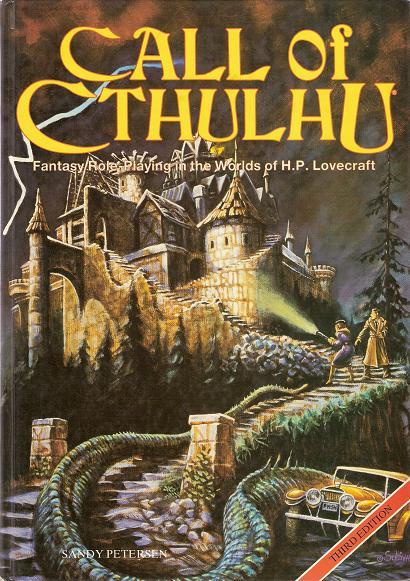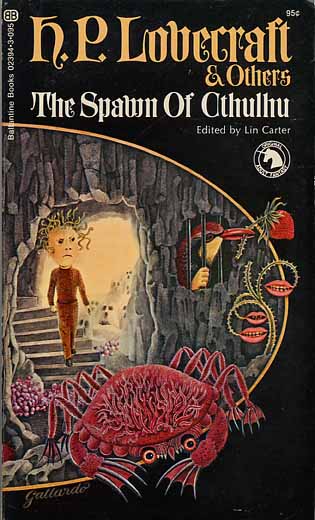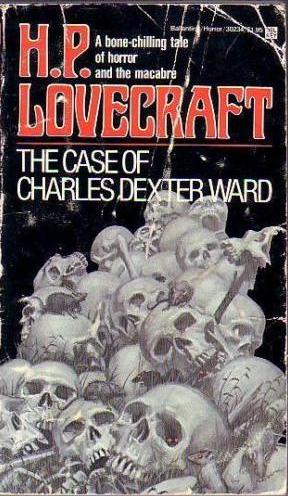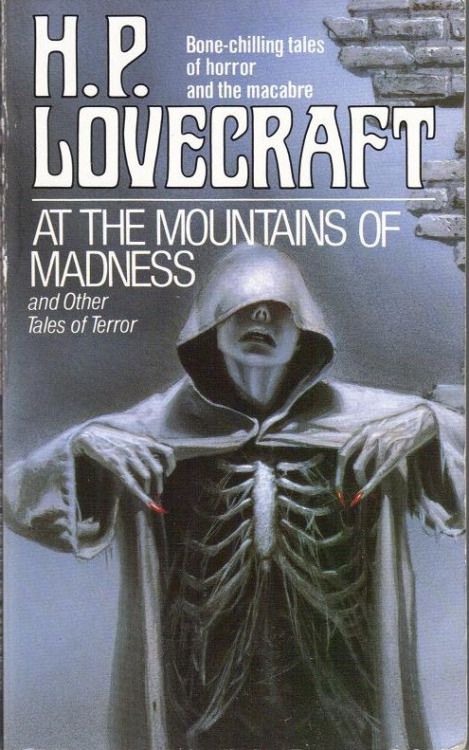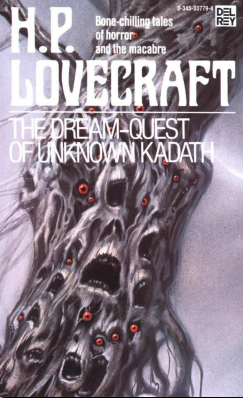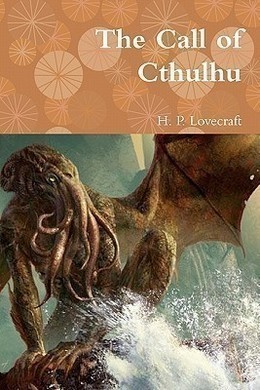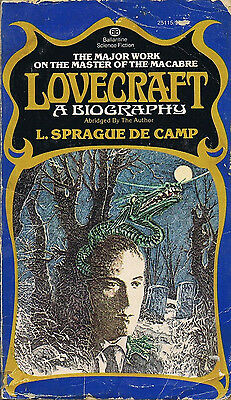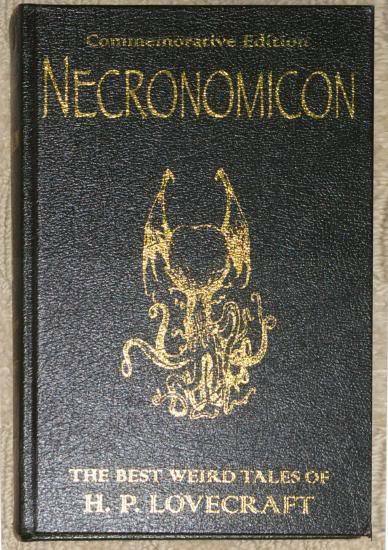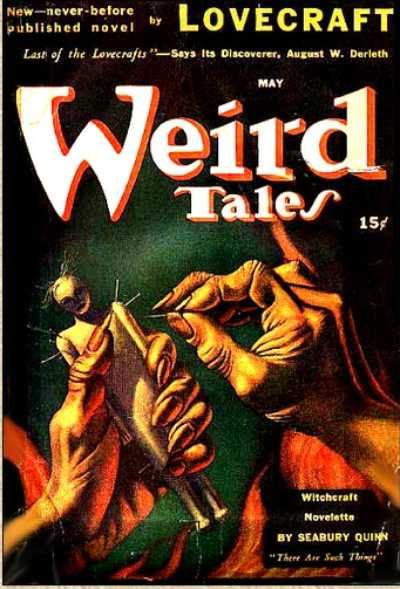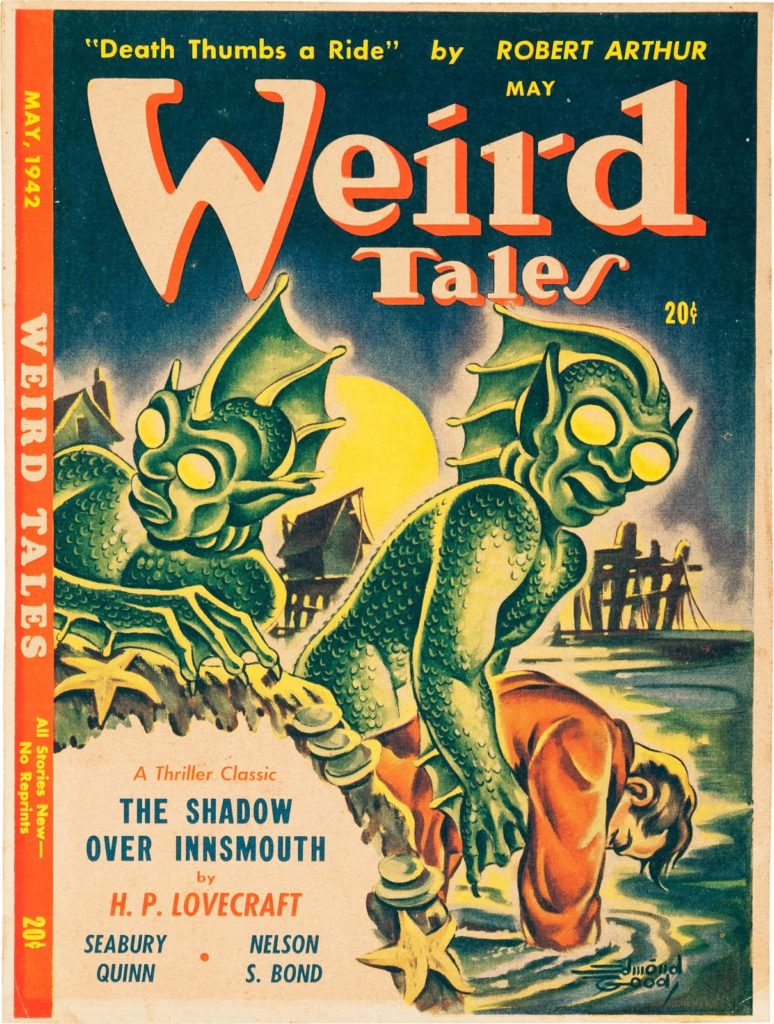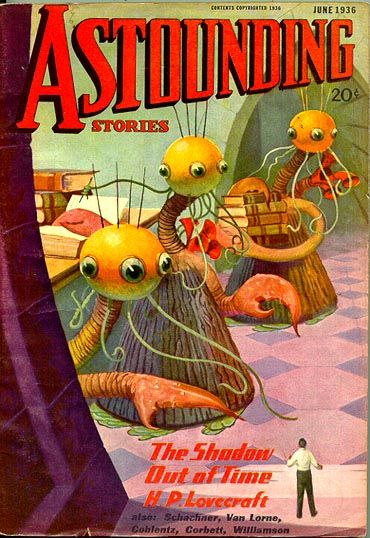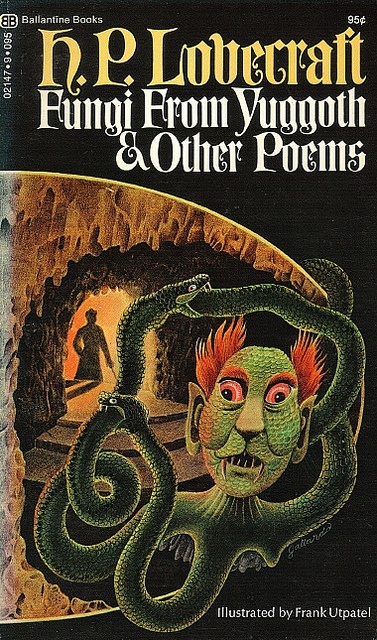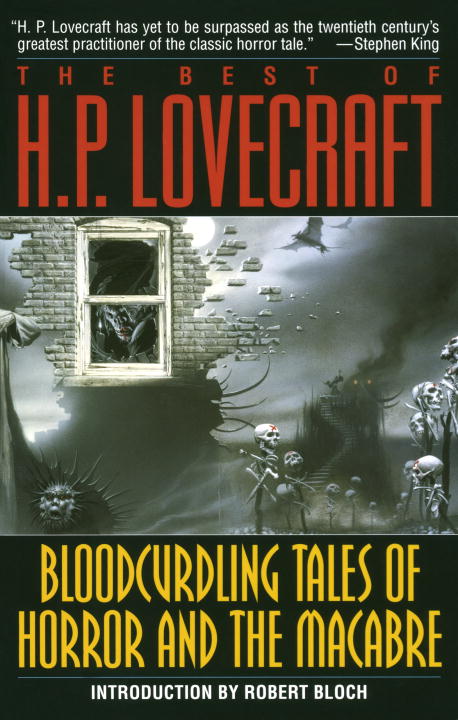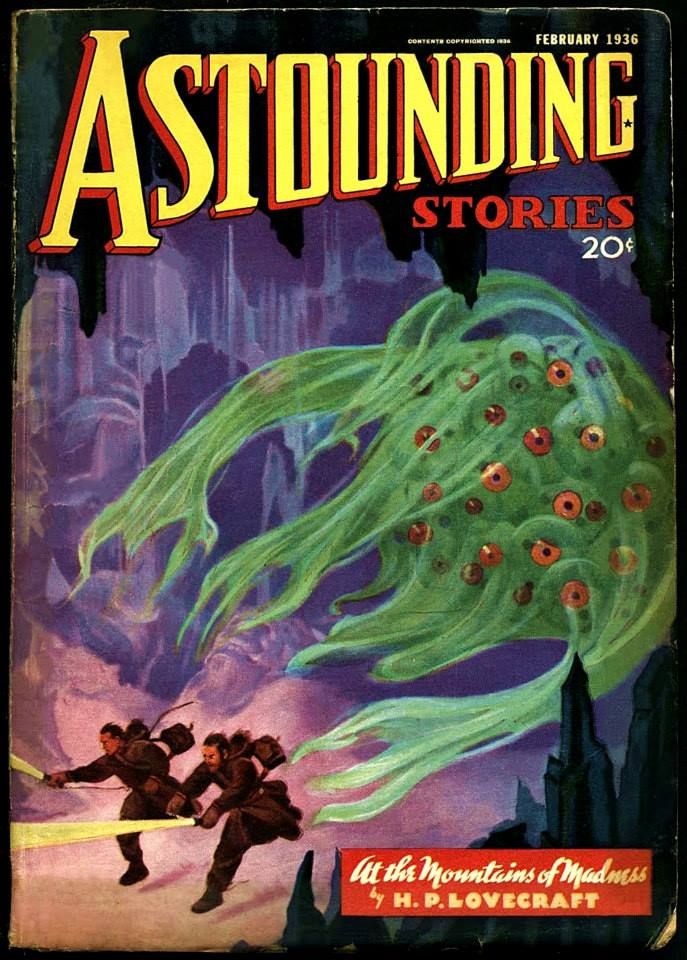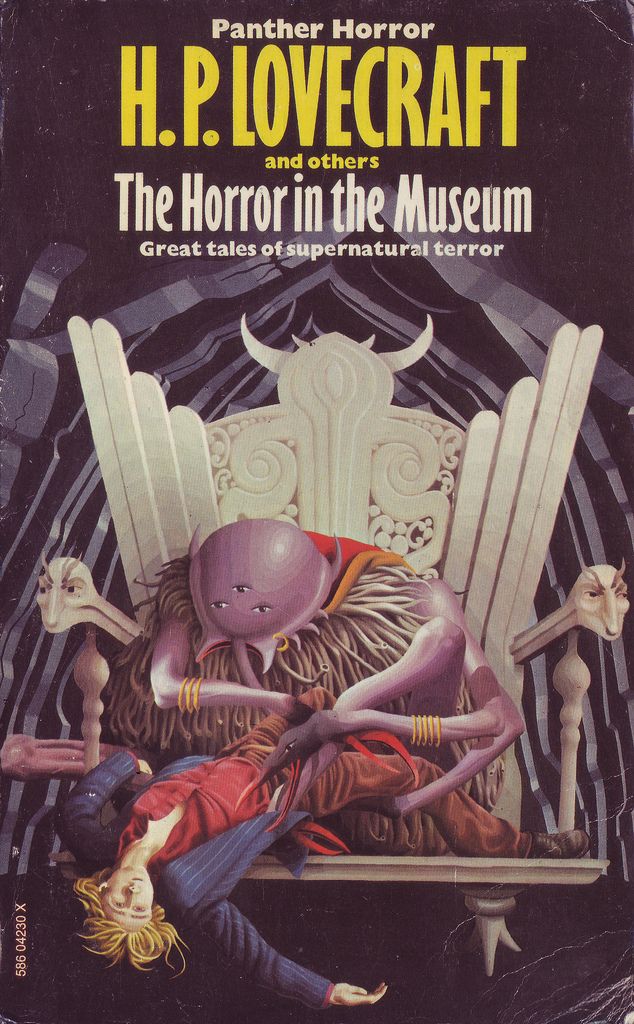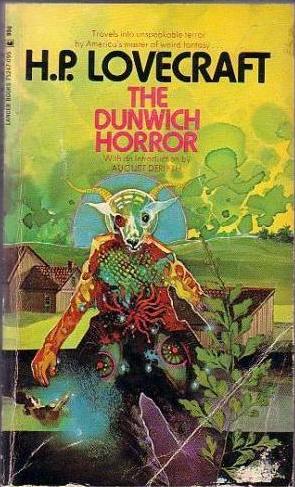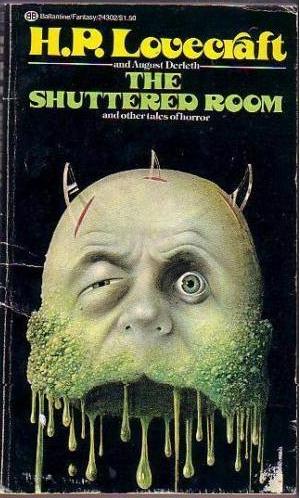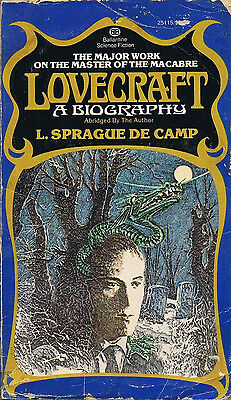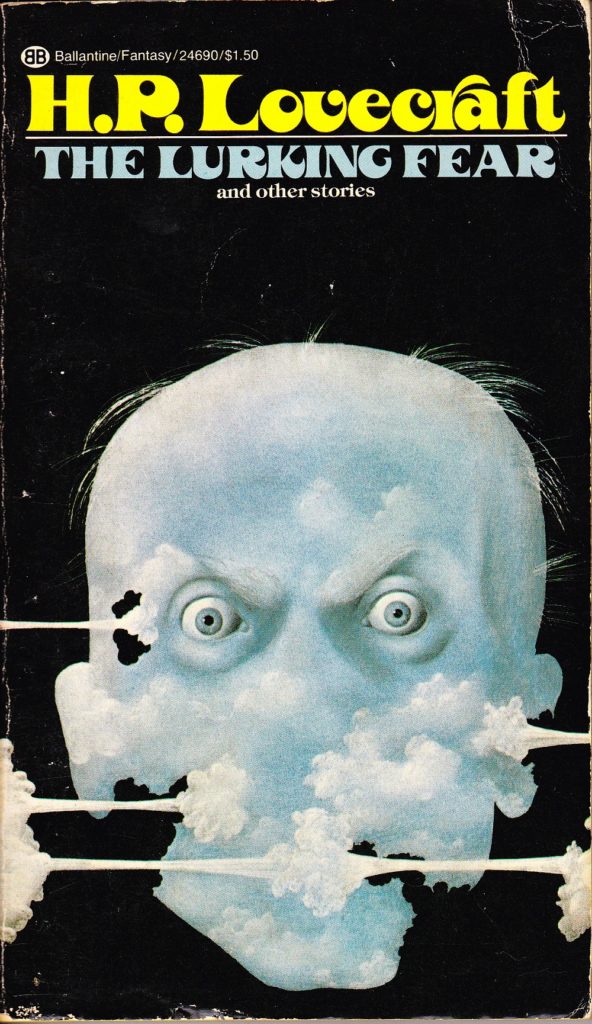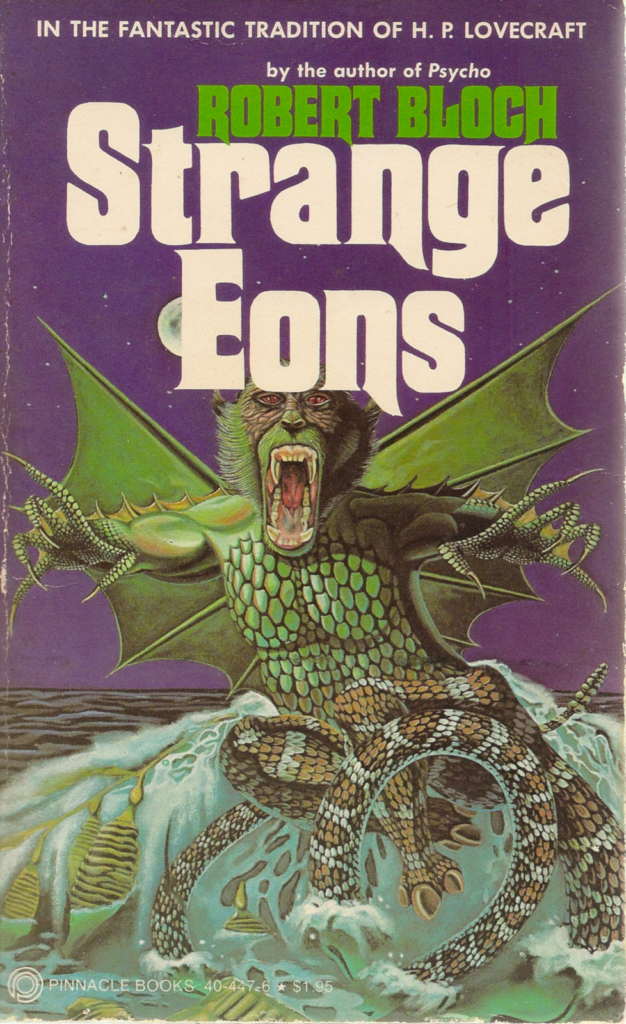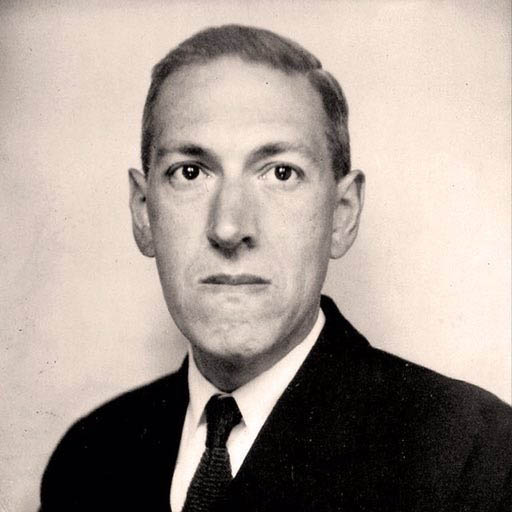
Howard Phillips Lovecraft (US: /ˈlʌvkræft/; August 20, 1890 – March 15, 1937) was an American writer of weird fiction and horror fiction, who is known for his creation of what became the Cthulhu Mythos.
Born in Providence, Rhode Island, Lovecraft spent most of his life within New England. He was born into affluence, which ended with the death of his grandfather. In 1913, he wrote a critical letter to a pulp magazine that ultimately led to his involvement in pulp fiction. During the interwar period, he wrote and published stories that focused on his interpretation of humanity’s place in the universe. In his view, humanity was an unimportant part of an uncaring cosmos that could be swept away at any moment. These stories also included fantastic elements that represented the perceived fragility of anthropocentrism.
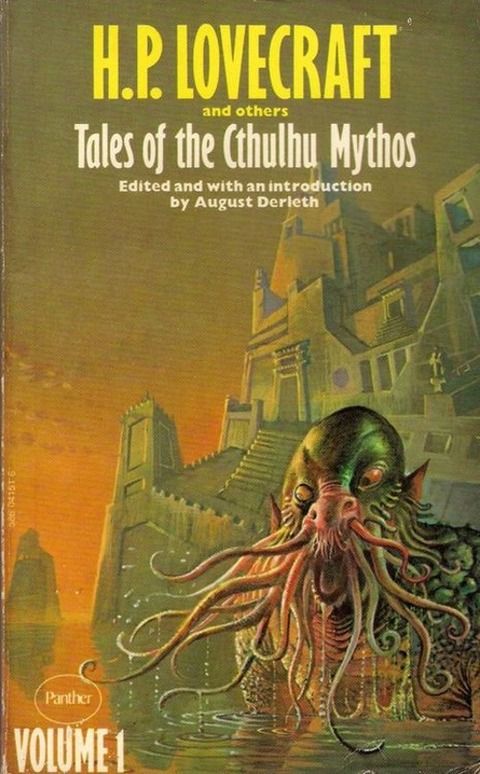
Lovecraft was at the center of a wider body of authors known as the “Lovecraft Circle”. This group wrote stories that frequently shared details between them. He was also a prolific writer of letters. He maintained a correspondence with several different authors and literary proteges. According to some estimates, he wrote approximately 100,000 letters over the course of his lifetime.[n 2] In these letters, he discussed his worldview, his daily life and tutored younger authors, such as August Derleth, Donald Wandrei, and Robert Bloch.
Throughout his adult life, Lovecraft was never able to support himself from earnings as an author and editor. He was virtually unknown during his lifetime and was almost exclusively published in pulp magazines before he died in poverty at the age of 46, but is now regarded as one of the most significant 20th-century authors of supernatural horror fiction.[3] Among his most celebrated tales are “The Call of Cthulhu“, “The Rats in the Walls“, At the Mountains of Madness, The Shadow over Innsmouth, and The Shadow Out of Time. His writings are the basis of the Cthulhu Mythos, which has inspired a large body of pastiches, games, music and other media drawing on Lovecraft’s characters, setting and themes, constituting a wider subgenre known as Lovecraftian horror.
Early life and family tragedies

Lovecraft c. nine years old
Lovecraft was born in his family home on August 20, 1890, in Providence, Rhode Island. He was the only child of Winfield Scott Lovecraft and Sarah Susan [nee Phillips] Lovecraft.[4]:16 Though his employment is hard to discern, Lovecraft’s future wife, Sonia Greene, stated that Winfield was employed by Gorham Manufacturing Company as a traveling salesman.[4]:13 Susie’s family was of substantial means at the time of their marriage, her father, Whipple Van Buren Phillips, being involved in many significant business ventures.[4]:8Whipple Van Buren Phillips
Whipple Van Buren Phillips[5] was an American businessman from Providence, Rhode Island who also had mining interests in Idaho. He encouraged the young Lovecraft to have an appreciation of literature, especially classical literature and English poetry. In his old age he helped raise the young H. P. Lovecraft and educated him not only in the classics, but also in original weird tales of “winged horrors” and “deep, low, moaning sounds” which he created for his grandchild’s entertainment. The exact sources of Phillips’ weird tales have not been identified. Lovecraft himself guessed that they originated from classic Gothic novelists like Ann Radcliffe, Matthew Lewis, and Charles Maturin. On March 27, 1904, he was seized by a “paralytic shock,” (likely a stroke). He died the following day, at his home at 454 Angell Street.[6]Winfield Scott Lovecraft
In April 1893, after a psychotic episode in a Chicago hotel, Winfield was committed to Butler Hospital in Providence. Though it is not clear who reported Winfield’s prior behavior to the hospital, medical records indicate that he had been “doing and saying strange things at times” for a year before his commitment.[4]:26 Winfield spent five years in Butler before dying in 1898. His death certificate listed the cause of death as general paresis, a term synonymous with late-stage syphilis.[4]:22 Throughout his life, Lovecraft maintained that his father fell into a paralytic state, due to insomnia and being overworked, and remained that way until his death. It is unknown whether Lovecraft was simply kept ignorant of his father’s illness or whether his later remarks were intentionally misleading.[4]:26Doting mother
After his father’s hospitalization, Lovecraft resided in the family home with his mother, his maternal aunts Lillian and Annie, and his maternal grandparents Whipple and Robie.[4]:28 According to the accounts of family friends, Susie doted on the young Lovecraft to a fault, pampering him and never letting him out of her sight.[7]:2 Lovecraft later recollected that after his father’s illness his mother was “permanently stricken with grief.” Whipple became a father figure to Lovecraft in this time, Lovecraft noting that his grandfather became the “centre of my entire universe.” Whipple, who traveled often on business, maintained correspondence by letter with the young Lovecraft who, by the age of three, was already proficient at reading and writing. When home, Whipple would share weird tales of his own invention and show Lovecraft objects of art he had acquired in his European travels. Lovecraft also credits Whipple with being instrumental in overcoming his fear of the dark when Whipple forced Lovecraft, at five years old, to walk through several darkened rooms in the family home.[4]:28 It was in this period that Lovecraft was introduced to some of his earliest literary influences such as The Rime of the Ancient Mariner illustrated by Doré, One Thousand and One Nights, a gift from his mother, Thomas Bulfinch‘s Age of Fable and Ovid‘s Metamorphoses.[4]:33, 36
While there is no indication that Lovecraft was particularly close to his grandmother Robie, her death in 1896 had a profound effect. By his own account, it sent his family into “a gloom from which it never fully recovered.” His mother’s and aunts’ wearing of black mourning dresses “terrified” him, and it is at this time that Lovecraft, approximately five and half years old, started having nightmares that would inform his later writing. Specifically, he began to have recurring nightmares of beings he termed “night-gaunts”; their appearance he credited to the influence of Doré’s illustrations, which would “whirl me through space at a sickening rate of speed, the while fretting & impelling me with their detestable tridents.” Thirty years later, night gaunts would appear in Lovecraft’s writing.
Lovecraft’s earliest known literary works began at age seven with poems restyling the Odyssey and other mythological stories. Lovecraft has said that as a child he was enamored of the Roman pantheon of gods, accepting them as genuine expressions of divinity and foregoing his Christian upbringing. He recalled, at five years old, being told Santa Claus did not exist and retorting by asking why “God is not equally a myth.”[4]:42 At the age of eight, he took a keen interest in the sciences, particularly astronomy and chemistry. He also examined the anatomy books available to him in the family library, learning the specifics of human reproduction that had yet to be explained to him, and found that it “virtually killed my interest in the subject.”[4]:60 In 1902, according to Lovecraft’s own correspondence, astronomy became a guiding influence on his world view. He began producing the periodical Rhode Island Journal of Astronomy, of which 69 issues survive, using the hectograph printing method. Lovecraft went in and out of elementary school repeatedly, oftentimes with home tutors making up for those lost school years, missing time due to health concerns that are not entirely clear. The written recollections of his peers described him as both withdrawn yet openly welcoming to anyone who shared his current fascination with astronomy, inviting anyone to look through the telescope he prized.

By 1900, Whipple’s various business concerns were suffering a downturn and slowly reducing his family’s wealth. He was forced to let the family’s hired servants go, leaving Lovecraft, Whipple, and Susie, being the only unmarried sister, alone in the family home.[4]:97 In the spring of 1904, Whipple’s largest business venture suffered a catastrophic failure. Within months, he died due to a stroke at age 70. After Whipple’s death, Susie was unable to support the upkeep of the expansive family home on what remained of the Phillips’ estate. Later that year, she was forced to move herself and her son to a small duplex. Lovecraft has called this time one of the darkest of his life, remarking in a 1934 letter that he saw no point in living anymore. In fall of the same year, he started high school. Much like his earlier school years, Lovecraft was at times removed from school for long periods for what he termed “near breakdowns.” He did say, though, that while having some conflicts with teachers, he enjoyed high school, becoming close with a small circle of friends.[4]:99 Aside from a pause in 1904, he also resumed publishing the Rhode Island Journal of Astronomy as well as starting the Scientific Gazette, which dealt mostly with chemistry. It was also during this period that Lovecraft produced the first of the types of fiction he would later be known for, namely “The Beast in the Cave” and “The Alchemist”.
It was in 1908, prior to his high school graduation, when Lovecraft suffered another health crisis of some sort, though this instance was seemingly more severe than any prior. The exact circumstances and causes remain unknown. The only direct records are Lovecraft’s own later correspondence wherein he described it variously as a “nervous collapse” and “a sort of breakdown,” in one letter blaming it on the stress of high school despite his enjoying it. In another letter concerning the events of 1908, he notes, “I was and am prey to intense headaches, insomnia, and general nervous weakness which prevents my continuous application to any thing.” Though Lovecraft maintained that he was to attend Brown University after high school, he never graduated and never attended school again. Whether Lovecraft suffered from a physical ailment, a mental one, or some combination thereof has never been determined. An account from a high school classmate described Lovecraft as exhibiting “terrible tics” and that at times “he’d be sitting in his seat and he’d suddenly up and jump.” Harry Brobst, who recorded the account and had a Ph.D. in psychology, claimed that chorea minor was the most likely cause of Lovecraft’s childhood symptoms while noting that instances of chorea minor after adolescence are very rare. Lovecraft himself acknowledged in letters that he suffered from bouts of chorea as a child. Brobst further ventured that Lovecraft’s 1908 breakdown was attributed to a “hysteroid seizure,” a term that today usually denotes atypical depression. In another letter concerning the events of 1908, Lovecraft stated that he “could hardly bear to see or speak to anyone, & liked to shut out the world by pulling down dark shades & using artificial light.”
Earliest recognition
Not much of Lovecraft and Susie’s activities from late 1908 to 1913 are recorded.[4]:128 Lovecraft mentions a steady continuation of their financial decline highlighted by a failed business venture of his uncle that cost Susie a large portion of their dwindling wealth. A friend of Susie, Clara Hess, recalled a visit during which Susie spoke continuously about Lovecraft being “so hideous that he hid from everyone and did not like to walk upon the streets where people could gaze on him.” Despite Hess’ protest that this was not the case, Susie maintained this stance.[7]:66 For his part, Lovecraft said he found his mother to be “a positive marvel of consideration”.[7]:64 A next-door neighbor later pointed out that what others in the neighborhood often supposed were loud, nocturnal quarrels between mother and son, she recognized as being recitations of Shakespeare, an activity that seemed to delight mother and son.
During this period, Lovecraft revived his earlier scientific periodicals.[4]:128 He endeavored to commit himself to the study of organic chemistry, Susie buying the expensive glass chemistry assemblage he wanted.[8]:85 Lovecraft found his studies were hobbled by the mathematics involved, which he found boring and would cause headaches that would incapacitate him for a day.[4]:129 Lovecraft’s first poem that was not self-published appeared in a local newspaper in 1912. Called Providence in 2000 A.D., the poem envisioned a future where people of English heritage were displaced by immigrants.[4]:137 Surviving unpublished poems from this period, most notoriously “On the Creation of Niggers”, were also emblematic of the xenophobia and racism inherent in much of Lovecraft’s later work.[4]:138
In 1911, Lovecraft’s letters to editors began appearing in pulp and weird fiction magazines, most notably Argosy.[4]:140 A 1913 letter critical of Fred Jackson, a prominent writer for Argosy, started Lovecraft down a path that would greatly affect his life. Lovecraft described Jackson’s stories as “trivial, effeminate, and, in places, coarse.” Continuing, Lovecraft said that Jackson’s characters exhibit the “delicate passions and emotions proper to negroes and anthropoid apes.” This sparked a nearly year-long feud in the letters section of Argosy between Lovecraft, along with his occasional supporters, and the majority of readers critical of his view of Jackson. Lovecraft’s biggest critic was John Russell, who often replied in verse, and to whom Lovecraft felt compelled to reply to because he respected Russell’s writing skills.[4]:145 The most immediate effect of the feud was the recognition garnered from Edward F. Daas, then head editor of the United Amateur Press Association[7]:84 (also known as the UAPA). Daas invited Russell and Lovecraft to the organization and both accepted, Lovecraft in April 1914.[4]:155
Rejuvenation and tragedy
With the advent of United I obtained a renewed will to live; a renewed sense of existence as other than a superfluous weight; and found a sphere in which I could feel that my efforts were not wholly futile. For the first time I could imagine that my clumsy gropings after art were a little more than faint cries lost in the unlistening void.
—Lovecraft in 1921.[4]:159
Lovecraft immersed himself in the world of amateur journalism for most of the following decade.[4]:159 During this period, he was an advocate for amateurism versus commercialism.[4]:164 Lovecraft’s definition of commercialism, though, was specific to writing for, what he considered, low-brow publications for pay. He contrasted this with his view of “professional publication,” which he termed as writing for journals and publishers he considered respectable. He thought of amateur journalism as training and practice for a professional career.[4]:165 Lovecraft was appointed to chairman of the Department of Public Criticism of the UAPA in late 1914.[4]:168 He used this position to advocate for his, what many considered peculiar, insistence on the superiority of English language usage that most writers already considered archaic. Emblematic of the Anglophile opinions he maintained throughout his life, he openly criticized other UAPA contributors for their “Americanisms” and “slang.” Often these criticisms were couched in xenophobic and racist arguments bemoaning the “bastardization” of the “national language” by immigrants.[4]:169 In mid-1915, Lovecraft was elected to the position of first vice-president of the UAPA.[4]:180 Two years later, he was elected president and appointed other board members that mostly shared his view on the supremacy of classical English over modern American English.[4]:182 Another significant event of this time was the beginning of World War I. Lovecraft published multiple criticisms of the U.S. government’s and the American public’s reluctance to join the war to protect England, which he viewed as America’s homeland.[4]:210
In 1916, Lovecraft published his early short story “The Alchemist” in the main UAPA journal, a departure from his usual verse. Due in no small part to the encouragement of W. Paul Cook, another UAPA member and future lifelong friend, Lovecraft began writing and publishing more fiction.[4]:273 Soon to follow were “The Tomb” and “Dagon“.[4]:239 “The Tomb”, by Lovecraft’s own admission, follows closely the style and construction of the writings of one of his largest influences, Edgar Allan Poe.[4]:240 “Dagon” though, is considered Lovecraft’s first work that embraced the concepts and themes that his writing would later be known for.[4]:251 In 1918, Lovecraft’s term as president of the UAPA elapsed, and he took his former post as chairman of the Department of Public Criticism.[4]:284 In 1919, Lovecraft published another short story, “Beyond the Wall of Sleep”.[4]:260
In 1917, as Lovecraft related to Kleiner, Lovecraft made an aborted attempt to enlist in the army. Though he passed the physical exam,[4]:303 he told Kleiner that his mother “has threatened to go to any lengths, legal or otherwise, if I do not reveal all the ills which unfit me for the army”.[4]:300
In the winter of 1918–1919, Susie, exhibiting symptoms of a “nervous breakdown” of some sort, went to live with her elder sister Lillian. It is unclear what Susie may have been suffering from. Neighbour and friend Clara Hess, interviewed in 1948, recalled instances of Susie describing “weird and fantastic creatures that rushed out from behind buildings and from corners at dark.”[9] In the same account, Hess describes a time when they crossed paths in downtown Providence and Susie “was excited and apparently did not know where she was.” Whatever the causes, in March 1919 they resulted in Susie being committed to Butler Hospital, like her husband before her.[4]:301 Lovecraft’s immediate reaction to Susie’s commitment was visceral, writing to Kleiner that, “existence seems of little value,” and that he wished “it might terminate”.[8]:97 Lovecraft visited Susie often, walking the large grounds with her, and sent her letters on a regular basis,[8]:97 but, speaking to Susie’s doctors, a month after she entered Butler, Lovecraft came to the realization that she was never going to be released.
Late 1919 saw Lovecraft become more outgoing. After a period of isolation, he began joining friends in trips to writer gatherings; the first being a talk in Boston presented by Lord Dunsany, whom Lovecraft had recently discovered and idolized.[4]:306 In early 1920, at an amateur writer convention, he met Frank Belknap Long, who would end up being Lovecraft’s most influential and closest confidant for the rest of his life.[4]:308 This period also proved to be the most prolific of Lovecraft’s short-story career.[7]:142 The influence of Dunsany is readily apparent in his 1919 output, later be to coined Lovecraft’s Dream Cycle, with stories like “The White Ship”, “The Doom that Came to Sarnath”, and “The Statement of Randolph Carter”. In early 1920 followed “Celephaïs” and “The Cats of Ulthar“.[10]:56 It was later in 1920 that Lovecraft began publishing the earliest stories that fit into the Cthulhu Mythos. The Cthulhu Mythos, a term coined by August Derleth, encompasses Lovecraft’s stories that share a commonality in fictional locations and Lovecraft’s invented pantheon of god-like beings known as the Great Old Ones.[10]:69 The poem “Nyarlathotep” and the short story “The Crawling Chaos”, in collaboration with Winifred Virginia Jackson, were written in late 1920.[4]:369 Following in early 1921 came “The Nameless City”, the first story that falls definitely within the Cthulhu Mythos. In it is found one of Lovecraft’s most enduring bits of writing, a couplet recited by his creation Abdul Alhazred, “That is not dead which can eternal lie; And with strange aeons even death may die.”[7]:149
On May 24, 1921, Susie died in Butler Hospital, due to complications from a gall bladder surgery five days earlier. Lovecraft’s initial reaction, expressed in a letter nine days after Susie’s death, was that of an “extreme nervous shock” that crippled him physically and emotionally, again remarking that he found no reason he should continue living.[4]:390 Despite Lovecraft’s reaction, he continued to attend amateur journalist conventions. It was at one such convention in July that Lovecraft met Sonia Greene.[4]:400

